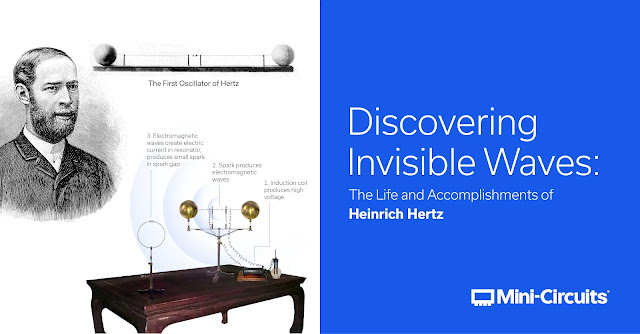“It always surprises me that Maxwell never seemed to attempt any experimental proof of the existence of electromagnetic waves,” stated Ambrose Fleming, the last student of James Clerk Maxwell at the Cavendish Laboratory, University of Cambridge, England. Following Michael Faraday’s discovery of the connection between magnetism and electricity, Maxwell delved into the intricacies behind the phenomenon now known as electromagnetism through mathematical calculations. According to Maxwell, as quoted by Lewis Coe in “Wireless Radio” (2006), mathematical equations are the most potent tools in the realm of physics to comprehend nature. At the fundamental level, mathematical equations can predict the outcomes of experiments without conducting them, as exemplified by the elegance of the Pythagorean Theorem.
Maxwell’s calculations unveiled this connection in a concept known as the “luminiferous ether,” a substance believed to pervade all space and function as the medium for electromagnetic waves. The natural waves resulting from this connection were later dubbed Maxwell’s Waves. They propagated uniformly in all directions. In an attempt to validate Maxwell’s beliefs, two American physicists, Albert A. Michelson and Edward W. Morley, conducted an experiment in 1887 to ascertain its existence. They measured Earth’s relative motion with respect to the sun. However, the experiment, later known as the Michelson-Morley Experiment, failed to yield any conclusions due to limitations in scientific equipment.
This circumstance led many 19th-century scientists to believe that the electric and magnetic phenomena were connected without any physical or intermediary link, based on the archaic theory of “action at a distance.” This theory laid the groundwork for Newton’s understanding of gravity before Einstein corrected it. Einstein borrowed the phrase spooky action from this theory. Additionally, due to limitations, most scientists believed that the propagation of electromagnetic waves was not constrained by the speed of light but moved faster—very fast—or at an unlimited speed (infinity). According to Hermann von Helmholtz, Chair of the Physics Department at the University of Berlin, the idea of electromagnetic wave propagation at an unlimited speed was strange, especially if the waves propagated in mediums other than air (vacuum).
Given these limitations, Helmholtz attempted to find a compromise between Maxwell’s conviction and the majority of scientists by accepting the “action at a distance” theory for free space but adopting Maxwell’s theory for dielectrics. Yet, not entirely confident in his own compromise, Helmholtz organized a competition through the Berlin Academy of Science in 1879. He sought to discover the true nature of electromagnetic phenomena and sought non-mathematical proof. This competition was brilliantly answered by Heinrich Hertz, his own student and protégé at the University of Berlin.
In his memoir titled “Electric Waves” (1893), Hertz revealed that what motivated him to participate in the competition was the recognition and acknowledgment from the physics world. Born in 1857 into a distinguished German family, Hertz was destined to lead a life of luxury. However, possessing talents and interests in all fields—except music due to his deafness—Hertz was determined not to be swayed by the privileges he had inherited from birth and to make the most of his abilities.
After completing high school, Hertz aspired to become an engineer. He initially served in the civil office in Frankfurt. As his work was not overly demanding, he had time to study. Hertz became intrigued by a new field: telegraphy. Recognizing communication as humanity’s future, he quit his job to study telegraphy further at Dresden Technical University. Yet, dissatisfied with the instructions, he left and joined the German Army as an infantry soldier.
After his military service, his adventure continued as he enrolled as a student at Munich Technical University. However, he changed his mind and eventually settled at the University of Berlin. Here, he encountered Hermann von Helmholtz, who was both his teacher and supervisor in the physics laboratory. Hertz graduated with the highest honors—summa cum laude. Indeed, he was brilliant, to the extent that Helmholtz intended to make him his “ideological offspring.”
Helmholtz asked his student to explore his compromise regarding the “action-at-a-distance” theory and Maxwell’s theory as the theme for his dissertation. However, due to the lack of precise equipment to detect electromagnetic waves, Hertz rejected the idea, causing a strain in their teacher-student relationship. The theme Helmholtz suggested later turned into a competition. Hertz’s rejection of the theme was also a statement of his desire to step out of Helmholtz’s shadow.
This intention became evident when Hertz left the University of Berlin after obtaining a master’s degree in physics to become a privatdozent—a scientist without salary—at the University of Kiel, the most abysmal university in Germany at the time, lacking research laboratories. In the absence of a lab, Hertz could only engage in theoretical research. This prompted him to move again, this time to the Technical University of Karlsruhe. In this university located 700 kilometers southwest of Berlin, Hertz finally became the master of his domain.
He became the most brilliant mind there and was designated to lead his own laboratory with adequate equipment. One of the available tools was the Riess Spiral, a pair of conductors (primary and secondary) spirally wound with a metal ball at the end. When an electric current flowed through the primary conductor, changes in the electricity could be detected and observed clearly on the secondary conductor. According to Hertz, after playing with this apparatus repeatedly, he became entranced. The only reason electric current could be observed through this apparatus was due to the spatial propagation of electromagnetic radiation.
Based on this insight, Hertz made modifications to the Riess spiral, using a circularly wound copper wire closed except for a small air gap between its ends. With the flow of electric current, the electromagnetic spectrum was finally “seen” by Hertz. Through this apparatus, the fundamental behavior of electromagnetic waves was unveiled through empirical evidence, including reflection, refraction, diffraction, interference, and polarization—much like the properties of light.
James Clerk Maxwell’s belief in electromagnetic waves, based solely on mathematical calculations, was indeed accurate. “Very beautiful. With this experiment, Hertz has joined Faraday and Maxwell,” praised Einstein.

Comments
Post a Comment